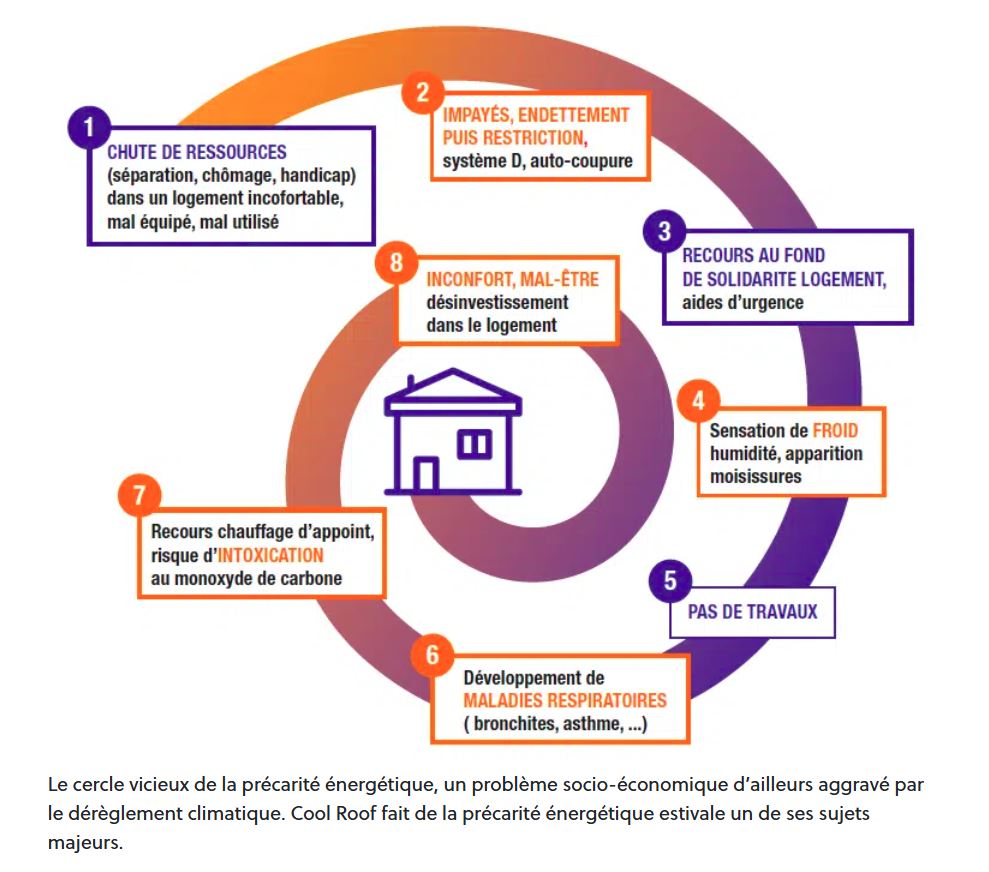
With the increase of the precarious socio-economic, the poor quality of energy in millions of homes as well as the increasing costs of energy and housing, more and more households do not have the means to warm up properly. According to the latest barometer of the national Ombudsman of the Energy1, 20% of the French say they have suffered from the cold in their homes, because :
To devote this phenomenon, the Grenelle II law of 12 July 2010 it is defined as follows : ” Was energy poverty a person who is experiencing in its housing, the particular difficulties to have the necessary energy supply to the satisfaction of his basic needs because of the inadequacy of its resources or its habitat conditions “.
Often associated with the cold and the difficulty of heating in winter, energy poverty is also a difficulty to cool its housing in the summer.
In the context of the health crisis, the Institut Jacques Delors has conducted a study aimed to provide an overview of energy poverty in the european Union, and of the manner in which the States members of the EU to deal with this issue.
Notably, this work has helped to advance 2-dimensional and under-estimated fuel poverty : the air-conditioning and transport. With climate change, and therefore the intensification of heat waves, the demand for air conditioning is increasing, even in areas of temperate climate. At the scale of Europe, although the winters were more rigorous in Europe, Northern Europe, it appears that it is in the South of Europe that energy poverty is the most important.
And because ! The high prices of electricity and gas, poverty, and the poor energy performance of dwellings are many reasons that explain this phenomenon. In fact, in countries with mild winters, where the buildings have not been designed for cold winters and which the energy efficiency is low, the situation is often uncomfortable for the people, and even unliveable in the case of episodes of extreme temperatures, including in the summer. Some scholars speak, therefore, of ” fracture energy “, geographical and social, between the North and the South of Europe.
As for energy poverty in the winter, the summer winds down, especially disadvantaged populations. It is also the note of the Institut Jacques Delors in one of its reports1 :, due to their low income, these people are more likely to be found in urban heat islands, and have inadequately insulated dwellings, which let in the heat.
The waves of heat waves are more common, there are many individuals trying to find solutions to refresh their habitat. Very quickly, it appears that they turn to air conditioning devices. However, as explained in the article ” Heat : stop the race to the room air conditioners “ written by the network CLER, these devices are both power-hungry and heat sources as to generate the cold, the air conditioners emit hot air, which heats up more the atmosphere and is involved in the formation of urban heat islands.
If the air conditioning does not therefore seem to be THE good solution, on the other hand, can afford to reduce heat effectively in its housing, while preserving the planet :
In Cool Roof, we offer solutions that are practical, affordable and sustainable to allow the largest number of cooling to buildings, and therefore the city, in a logic low-tech and social justice.
Since the company’s inception, our Pole SSE-Solidarity works to the accessibility of the technology of cool roofing, in order to offer an alternative to passive cooling without discrimination of income.
This is achieved in particular by the provision of a formula ” open source “ cool roofing, similar to the flagship product of the company, for everyone.e will be able to design his own Cool Roof ! For more information on this initiative, please join us on the group Facebook Cool Makers.
1. “Barometer Energie-Info 2021 : the energy at the heart of the concerns of the French people “, The national ombudsman of the energy, 12/10/2021.
2. E. Magdalinski, M. Delair, T. Pellerin-Carlin, Institut Jacques Delors, Policy Paper n°259, February 2021.
Cool Roof ssplint to decipher for you the phenomena of social, economic and environmental that climate affects most strongly. Read our articles “The Cool Roof explained” to learn more our solutions of sfit precisely, and the long-term climate changes.